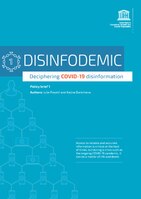
Photo from wikipedia
Introduction: The COVID-19 pandemic is rapidly evolving with the number of cases exponentially rising. The research scientific community has reacted promptly as evidenced by an outstanding number of COVID-19 related… Click to show full abstract
Introduction: The COVID-19 pandemic is rapidly evolving with the number of cases exponentially rising. The research scientific community has reacted promptly as evidenced by an outstanding number of COVID-19 related publications. As the number of scientific publications rapidly rises, there is a need to dissect the factors that lead to highly impactful publications. To that end, the present paper summarizes the characteristics of the top 50 cited COVID-19-related publications that emerged early during the pandemic. Methods: A systematic search of the Web of Science, Scopus, and Google Scholar was performed, using keywords related to COVID-19 and SARS-CoV-19. Two independent authors reviewed all the search results, screening for the top 50 cited COVID-19-related articles. Inclusion criteria comprised any publication on COVID-19 or the SARS-CoV-2 virus. Data extracted included the type of study, journal, number of citations, number of authors, country of publication, and study content. Results: As of May 29th, the top 50 cited articles were cited 63849 times during the last 4 months. On average, 14 authors contributed to each publication. Over half of the identified articles were published in only 3 journals. Furthermore, 42% and 26% of the identified articles were retrospective case series and correspondence/viewpoints, respectively, while only 1 article was a randomized controlled trial. In terms of content, almost half (48%) of the identified publications reported clinical/radiological findings while only 7 out of the 50 articles investigated potential treatments. Conclusion: By highlighting the characteristics of the top 50 cited COVID-19-related articles, the authors hope to disseminate information that could assist researchers to identify the important topics, study characteristics, and gaps in the literature.
Journal Title: Infectious Diseases
Year Published: 2020
Link to full text (if available)
Share on Social Media: Sign Up to like & get
recommendations!